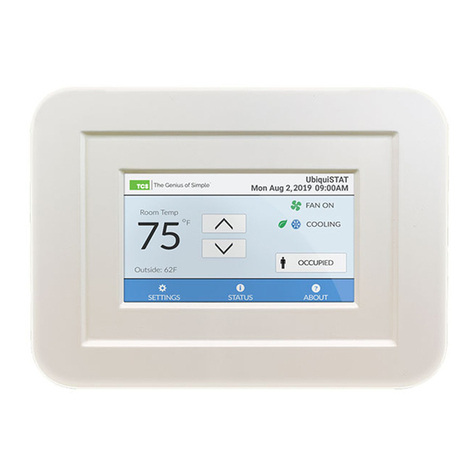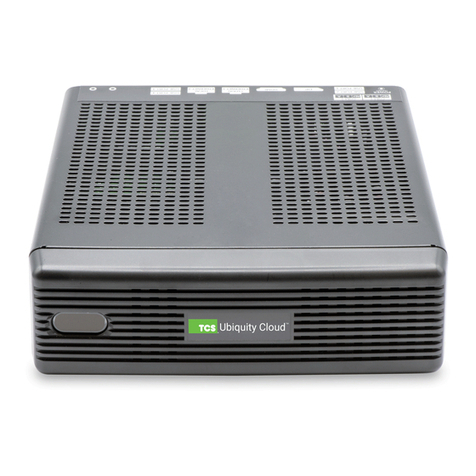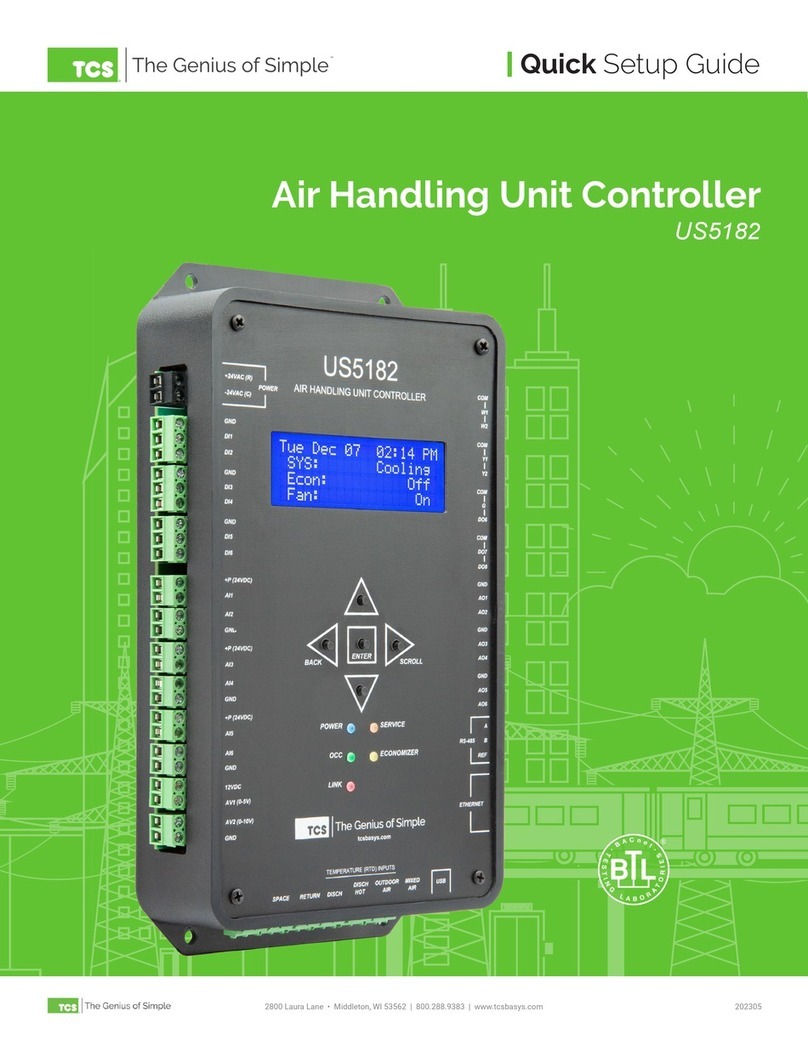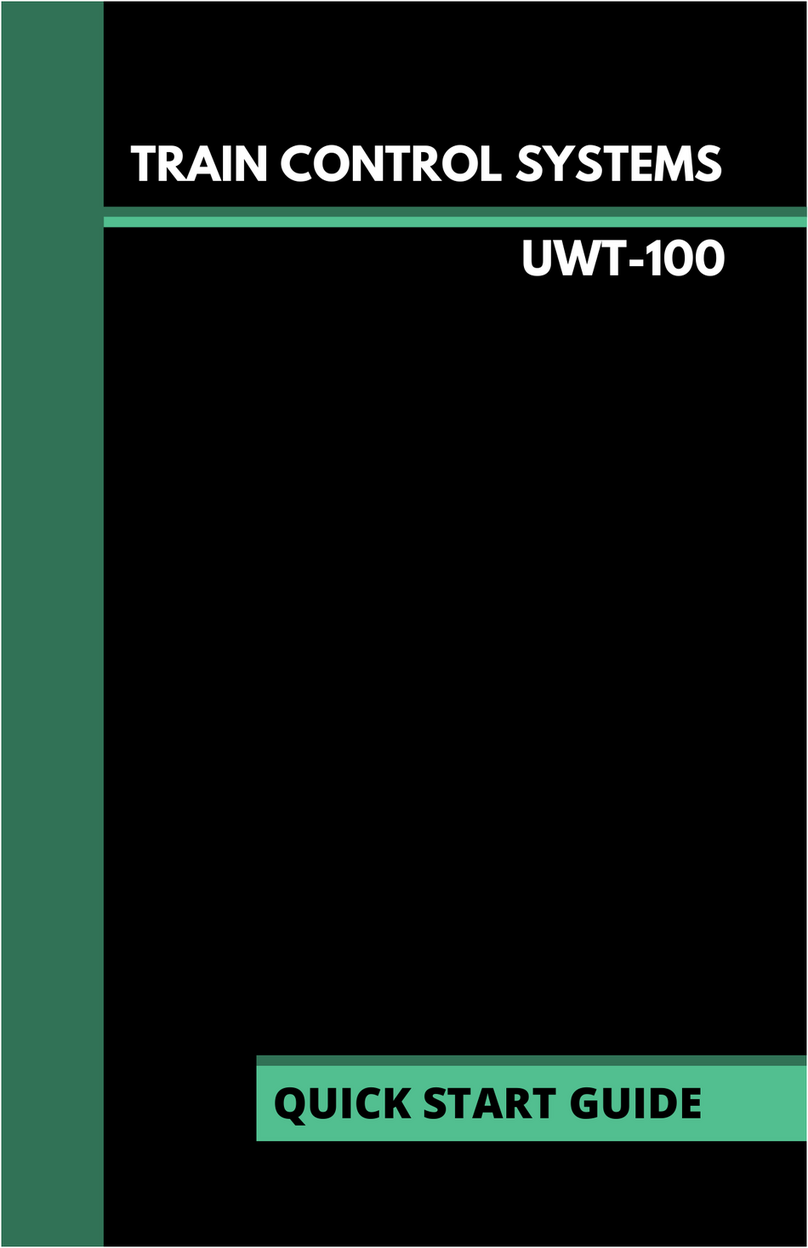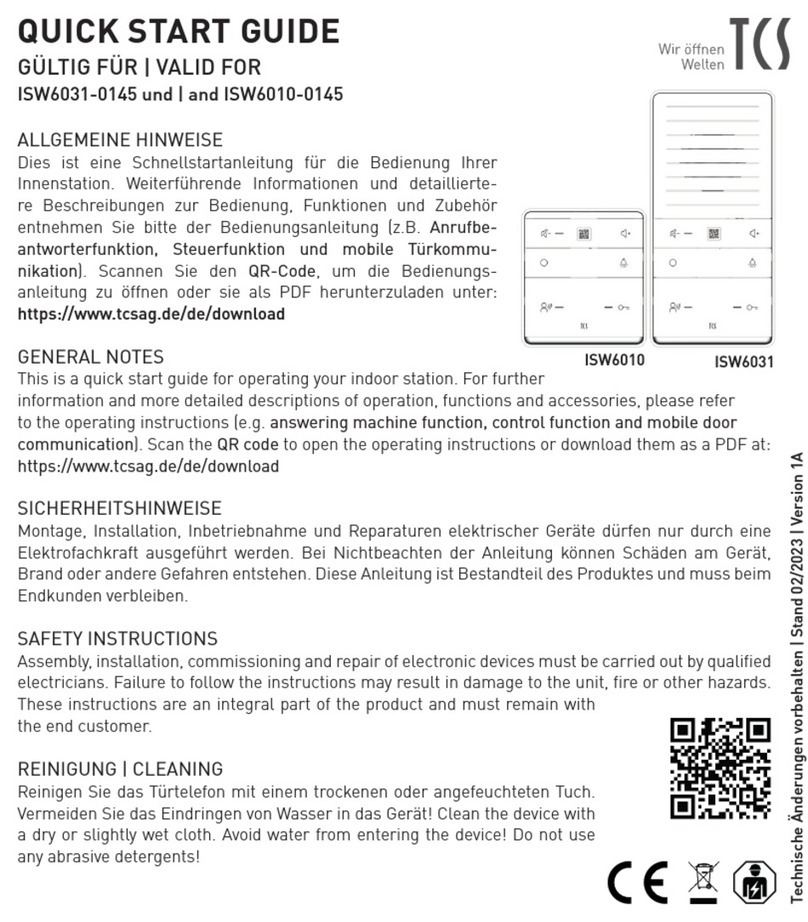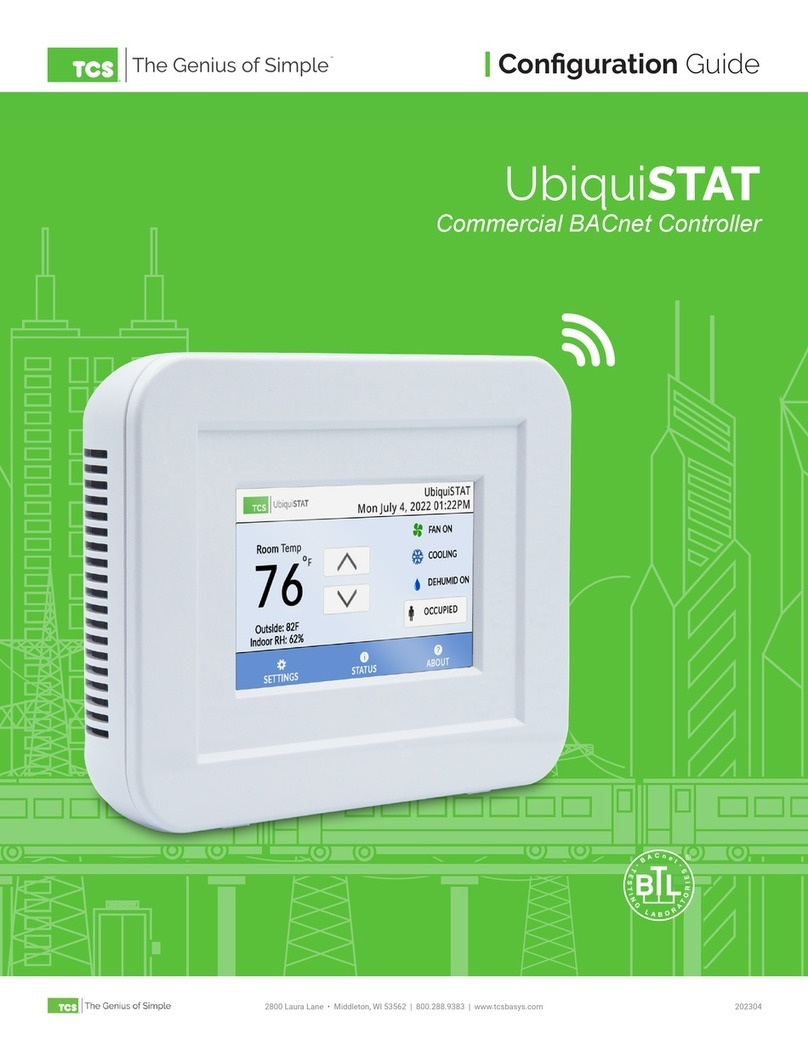
2800 Laura Lane Madison, WI 53562 | 800.288.9383 Fax: 608.836.9044 | www.tcsbasys.com 10
Zone Temperature
Zone Temperature
HEAT COOL FAN OCC
In the occupied mode, the
relay is closed.
In the unoccupied mode, the
relay is open.
In the occupied mode, the fan
is on.
The unoccupied fan sequence
is shown below.
DO5 AND DO6 MODES
Differential
Offset
Deadband
Setpoint
On Point
Off Point
OFF
ON
Deadband
Offset
Differential
Setpoint
Off Point
On Point
OFF
ON
Setpoint
Deadband
Deadband
ON
ON
OFF
Digital Outputs NO15 and NO2
Zone Temperature
Digital Outputs NO1 and NO2
SEQUENCE LEGEND
SP=Setpoint
DB=Deadband
P(temp)=Temperature Proportional Band
P(CFM)=CFM Proportional Band
MODULATING OUTPUT AO1
For pressure independent systems, a CFM setpoint is
generated based on: temperature proportional band,
sensed temperature and the temperature setpoint. The
control output is dependent on the CFM proportional
band, CFM measured and the CFM setpoint that has
been generated. For pressure dependent systems, the
control output is based on the temperature proportional
band, sensed temperature and the temperature setpoint.
TRIACS DO1, DO2, DO3, DO4
The SZ1025b can be configured for floating damper and/
or valve motors when used with the QE25 interface. The
CW1 provides clockwise rotation to open the damper
motor.
The CCW1 provides a counter-clockwise rotation to close
the damper motor. The power that CW1 and CCW1 pro-
vide to the damper motor must not exceed 200 mA.
The CCW2 provides clockwise rotation to open the valve
motor. The CCW2 provides a counter-clockwise rota-
tion to close the valve motor. The power that CW2 and
CCW2 provide to the valve motor must not exceed 200
mA.
1. Be sure to check and verify all wiring before powering
the SZ1025b.
2. Turn power on. The SZ1025b display LED should
light up.
3. If the SZ1025b has not been pre-programmed, it
should be programmed at this time.
4. Increase the setpoint on the analog (TS2032a) or digi-
tal (PX1060) zone sensor. Observe the damper opera-
tion and heating stage(s) if used.
5. Decrease the setpoint on the analog (TS2032a) or
digital (PX1060) zone sensor. Observe the damper
operation and cooling stage(s) if used.
6. Note that the operation of the SZ1025b will depend on
how it is programmed.
The SZ1025b is now ready for operation.
TROUBLESHOOTING
No Display
Check for 24 VAC on terminals “R” and “C”.
No communication
Make sure baud rate selection jumper for the QD1010 is
the same as programmed in the SZ1025b.
No communication while connected to TS2023a
When a QD1010 is connected to a PX1060 or TS2023a,
the QD1010 must be powered with the external power
supply supplied with the QD1010. The TS2023a or
PX1060 does not provide power on the phone connector.
Inputs do not read correctly
If not using a setpoint input, SP must be shorted to
GND. For the room temperature and supply air temper-
ature readings, slight adjustments can be made in via
software. For different pressure readings, make slight
adjustments to the zero port which is the middle pressure
pot located closest to the high pressure port fitting.
Output operation is not correct
Check programmed parameters. In particular check
“Reverse” and “Direct” acting selections for the damper
and valve and offset and differential selections for the
relay outputs. Check wiring.
Sequence of Operations
Checkout & Troubleshooting






